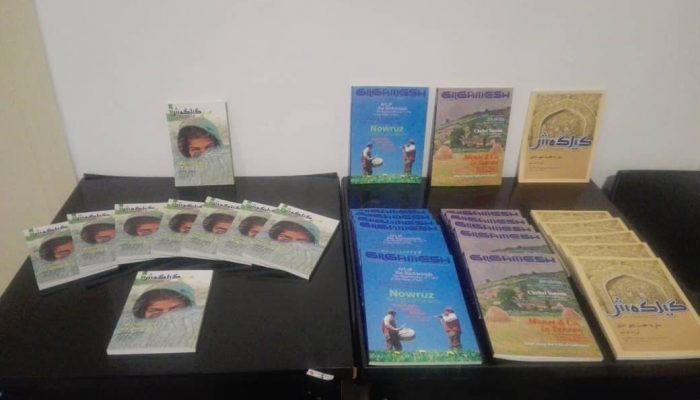Gilgamesh mulls over the role of museum as a multifaceted space

The role of museum as a multifaceted space was discussed during the unveiling ceremony of the 5th edition of the English version of Gilgamesh.
This edition of the Gilgamesh explores the museums as windows into cultural interaction and cultural heritage, with an emphasis on Persian civilisation.
The anthropologist Zohreh Anvari, the Malek National Museum and Library Director Reza Dabirinejad and the head of Gilgamesh magazine policy making council Arash Nooraghayee attended the ceremony, which was held at Tehran’s Vartan House on October 1
Museum, a place for cultural recreation
During the ceremony, Anvari talked about the history of establishment of the first museums in Europe.
“Today museum is a non-profit organization, which provides the visitors with several case studies and education and is also a place for recreation,” she said.
She said that the museum was previously considered as an economic property but today it is a place, which meets cultural and social demands of a society.
Museum, an opportunity for social interaction
During the event, the Malek Museum Director Reza Dabirinejad, who has brilliant ideas about the new role of museum in today society, made speech.
There is no global definition about museum, the function of museums vary according to the society they established in, he explained.
“The modernization of museum in order to be an interactive place is not necessarily mean to digitalization of these places,” he said.
What is important is that the museum should have the ability to interact with people of the society, hence there is not a single solution for it, he said.
The national characteristics of people who live in a society is a very important issue for making the museums interactive places, he said.
There is no single model for museums otherwise there should be different museums in a country for different tastes of people to enjoy that, Dabirinejad said.
The museums should be event-based, and do not come to a standstill to continue their life, he explained.
He extolled the photos and text shared by the visitors of the museums at the social networks.
“This is the way that the museums interact with the society. People, as the narrators of the museums, can make the places dynamic,” he added.
Museums as third millennium temples
“In an article, I resembled museums to modern temples in which visitors, as pilgrimages, tranquilise in front of each item and are eager to visit the place,” Nooraghayee said during the event.
The interaction between museum and visitor is one of the main factors in cultural development, he said.
Nooraghayee, who is also a tourist guide, recounted some of his memories from museum visiting.
No one can undermine the role of museums in connecting people with each other, he said.
Museums in Iran should manifest the national insight in their curating and architecture and other related things, he concluded.
Gilgamesh, a gateway to sustainable development
At the end of the ceremony, the editor-in-chief of the English version of the Gilgamesh magazine Sara Asadi introduced its latest edition.
The sustainable development is one of the main concerns of the magazine, which is observed in all five editions, she explained.
She introduced the different parts of the magazine, most of them accompanied by informative infographics and pictures.
Focusing on a specific theme each season, Gilgamesh magazine showcases Iranian heritage and tourism, by means of articles and photographs by expert professionals, alongside infographics.
As the first eco-friendly magazine of its kind, the pages are composed of stone paper for which no tree is cut down and no water is wasted.









